The processor in your computer is like a caged beast, and overclocking the CPU will set it free. Intel’s i5-4690K is a mid-range processor, and overclocking will push it further to achieve more clock speed.
But you can’t overclock it blindly. For this, you need the exact guideline to achieve higher clock speed. And in this article, you’ll get that with proper safety measurements.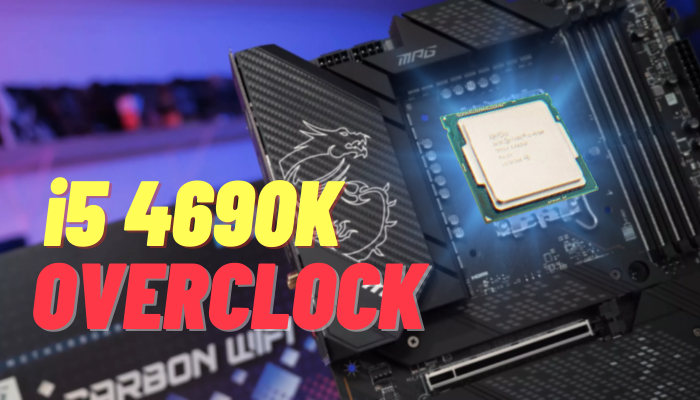
So, sit tight and start reading till the end. Let’s overclock the i5-4690K!
How to Safely Overclock i5 4690K
To overclock the i5-4690K, you have to ensure several factors such as proper cooling, stability, passing exact voltage into the Vcore, etc. Among these, passing the proper voltage to the VID or Vcore it’s the major one to achieve the maximum stable clock speed for i5-4690K.
If you tweak the Vcore (Voltage Core), outside the safety limit, it may cause a crash, unstable, or constant blue screen error to the system. Plus, ensure that you have a decent cooling system because K-series CPUs don’t come with a stock cooler.
Remember that, overclocking a processor varies for every chip.
So, get an aftermarket air or liquid cooler, to cool down the overclocked CPU. The processor will overheat because you are pushing it further by passing more voltage into its cores. For this, the clock speed bumps up and the CPU began to heat up.
Make sure to lower the CPU temp when it is skyrocketing, otherwise, you’ll end up with frequent system crashes, a blue screen of death, and so on.
So, keep in mind these factors before beginning the overclocking process. However, there are additional factors to consider before overclocking the i5-4690K.
Read the below consideration factors for overclocking i5-4690K:
- Make sure BIOS is updated to the latest version.
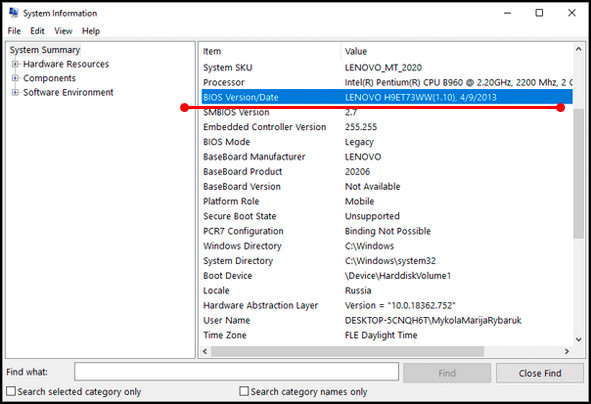
- Update the chipset driver to the current one.
- Proper cooling system to cool down the CPU.
- Set proper CPU ratio & CPU core voltage.
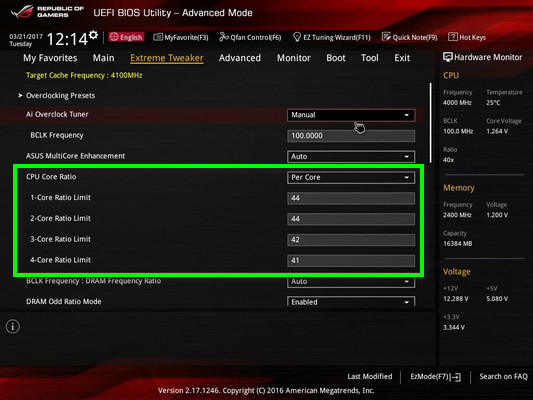
Now let’s begin the overclocking process after taking proper precautions as I mentioned above.
Here are the procedures to safely overclock an i5-4690K:
1. Get to the BIOS
If you want to overclock any processor, make sure to overclock it from the BIOS. Don’t fall for any third-party overclocking apps, if you’re a beginner. To go to the BIOS, restart the PC, and when the BIOS flash-screen appears, keep pressing the F2 or Delete key from the keyboard.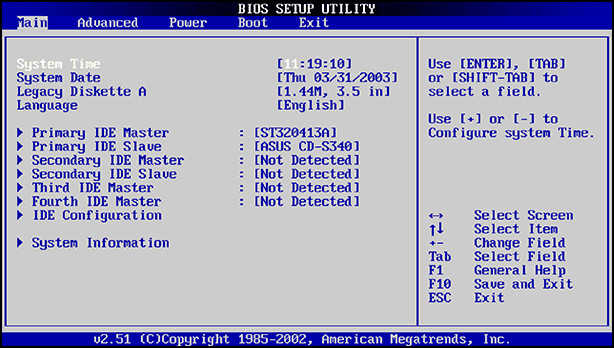
But, not all the motherboards have the same boot menu key, so know the exact boot menu key for your motherboard from the specs sheet.
2. Go to the Overclock Section
You can’t overclock a processor unless you’re using the proper motherboard that supports overclocking the CPU. For an Intel K-series processor, go for a Z-series motherboard because only this series supports overclocking.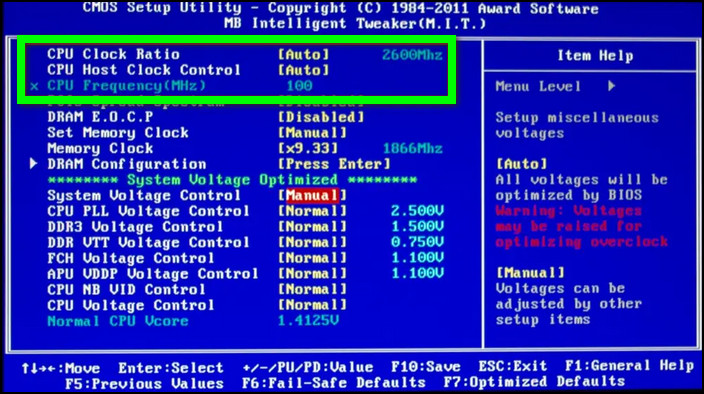
It doesn’t matter which brand it is because all motherboard brands release Z-series boards in the market. So, after going to the BIOS, look for the OC section and click on it.
3. Change the CPU Ratio, CPU Core voltage & VCCIN
It’s time to change the CPU Ratio, CPU Core Voltage & VCCIN. By default, these are set to Auto. So, you need to tweak those a bit. Before making the changes to the CPU Ratio, you should know how it works.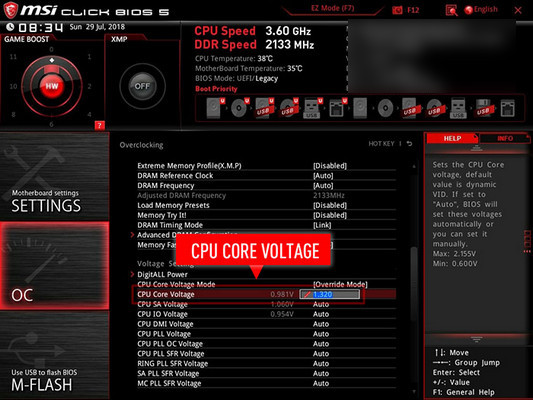
The CPU Core Ratio is also known as a multiplier, and it’s called that because the base clock is 100MHz by default, and the multiplier provides the final clock speed of your CPU. For example, if you have set the Core Ratio to 40, you’d be at 4000MHz or 4.0GHz.
So, set the CPU Core Ratio to 44 for all cores.
And the next one you’re going to change is the most important one, the Vcore or CPU core voltage. But before increasing it, keep in mind that the more voltage you add to the CPU, the more heat output will come out of your CPU.
So, scroll down a bit, and look for the CPU Core Voltage field. Once you find it, set the CPU Core Voltage to 1.2 volts. After changing the voltage, press F10 from the keyboard to save the changes that you made to the BIOS and exit.
Now, it’s time to set the VCCIN to 1.85 volts but remember without having an AIO cooling system don’t push this VCCIN too much. VCCIN is the input voltage, and it directly affects the VRM of the 4th gen Intel Haswell chips.
For overclocking safely, you should know how much voltage is enough for a CPU. Without knowing it, you can end up with a dead CPU by pushing over voltage into it.
4. CPU Overclocking Aftermath
So, after tweaking the multiplier and Vcore if the system boots up, you need to run some stress tests now, and it’s important to check the CPUs stability after overclocking.
For stability testing, you may use the Prime95 or AIDA64. So, download those tools and start the stress test for the CPU. If the CPU passes the stress test, and the CPU temperature is not over 80 degrees when it’s under load, you’re good to go.
Now, you can go to the BIOS again and increase the multiplier to 45, but leave the Vcore to 1.2 volts as modified before. Then, save & exit from the BIOS, and run the stress test again. If everything is good and the CPU is stable under load, you’ve safely overclocked i5-4690K to 4.5GHz.
Why not push it further?
So, let’s go for the 4.6GHz. So, change the core ratio to 46 and repeat the steps. If the CPU is stable and the cooling system managed to hold it below 80 degrees, you should stop here.
However, pushing the CPU to achieve 4.7GHz needs more voltage in its cores. But as I stated before, more voltage means more heat for the CPU. You can go for 4.7GHz in case you own a beefy cooling system.
That’s all now you have successfully overclocked your core i5-4690K. Now, play any games or run benchmarks to see the boosted performance for yourself.
Benchmark of Overclocked Core i5 4690K
Benchmarking is a must after overclocking any CPU to know the maximum gain in performance over the stock clock speed. According to my testing, I found my i5-4690K with 4.6GHz gained an average of 8.5% performance improvement against the stock clock speed.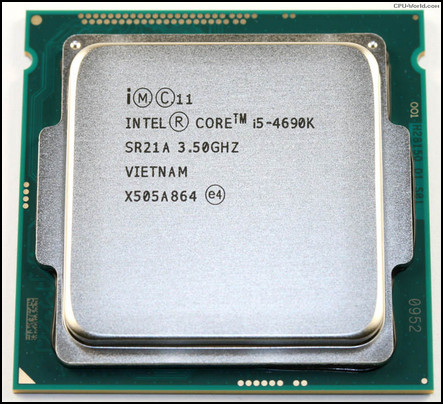 So, for the test, I used my gaming rig and the specs are as follows:
So, for the test, I used my gaming rig and the specs are as follows:
- Motherboard: MSI Z97 Gaming 5
- Processor: i5-4690K
- RAM: GSkill 16 gigs of RAM with 1866MHz bus speed
- GPU: Gigabyte Aorus GTX 1070 Ti 8 GB GDDR5
- CPU Cooler: Corsair H100I Pro AIO
- PSU: Seasonic 650W
With this gaming rig, I tested several games after overclocking the CPU to 4.6GHz. And the results are pretty good, i5-4690K nailed it with a decent margin. Let me show the result in a graph for you.
Here is the benchmark of an overclocked i5-4690K tested with several games: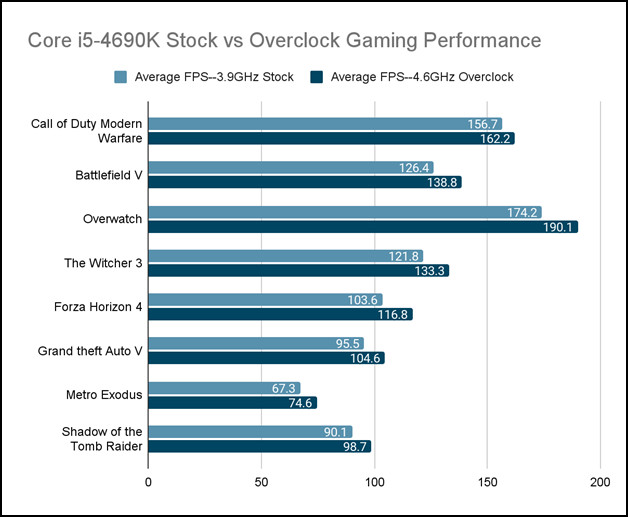
So, from the above benchmark, you can clearly see the gaming performance improvement of an overclocked i5-4690K with GTX 1070 Ti, in ultra settings. The overall gaming FPS increased by a great margin.
Why Overclocking Intel Core i5-4690K?
Intel’s 4th gen core i5-4690K is a weak link for gamers and professionals who deal with heavy apps, mostly. This quad-core processor is a wicked one, which is powerful but doesn’t have any hyper-threading. But to make it stronger, you need to push its GHz out of the boundary.
GHz or clock speed is a fact when you’re talking about the ultimate performance of a CPU. Speaking of that, high CPU-intensive tasks are facilitated by the higher clock speed. That’s why overclocked CPUs are the elephants in the room.
If you look at the i5-4690K’s spec sheet, it comes with four cores and only four threads, meaning it lacks the hyper-threading advantage. Plus, it has a base clock frequency of 3.5 GHz & max turbo frequency of 3.9 GHz.
All the processors have these two types of frequencies, and you should all major differences between the base clock vs boost clock speed.
Though the CPU performs decently at max clock speed, it lacks virtual cores. Even then, i5-4690K will be treated unfairly, without overclocking it because you can still push it harder to get the maxed-out performance from this K-series processor.
Not all processors support overclocking, but how to know whether your CPU is overclockable or not?
The K-series for Intel & Ryzen series for AMD support overclocking. As for Intel, both K & KF series are powerful CPU lineups that combined with overclocking advantages. So, these unlocked K-series CPUs, like i5-4690K, will deliver better performance after overclocking properly.
That’s why you must unlock the clock speed of i5-4690K, to gain the beast-like performance. Speaking of clock speed, you might face CPU clock speed spiking frequently when the CPU is idle. But don’t panic, know the reasons behind jumping clock speed and fix it.
What is the Maximum Limit of i5-4690K Overclocking?
There is a safety limit for overclocking a CPU, and for i5-4690K, it’s between 4.4 to 4.6 GHz. In fact, you can overclock i5-4690K easily, but look for the aftermath. After overclocking a processor, you won’t gain anything if the CPU isn’t stable. So, after overclocking it, check the CPUs stability.
That’s why performance consistency becomes a matter of concern for overclocking. What you can do is test the stability frequently before tuning up the multiplier. When the system becomes unstable, decrease the multiplier or push more voltage to the CPU.
And at the same time, you should look for the temperature too. If it’s too hot, you should lower the voltage. As long as, everything is okay such as voltage, multiplier, and temperature, you can overclock the CPU further.
So, the maximum stable overclocking limit for the i5-4690K is between 4.4 to 4.6 GHz. Some might have managed to ramp it up to 4.7 GHz, but it’s not that stable. Additionally, you must need a beefy cooling system to cool down the CPU when the clock speed is that high.
FAQs
How high can I overclock i5-4690K?
You can overclock i5-4690K up to 4.7 GHz with less than 1.3 volts, but stability could be an issue without a beefy liquid cooler.
What’s the safety limit for overclocking an i5-4690K?
You can overclock an i5-4690K to 4.4 to 4.6 GHz without any stability issues. Because more than 1.2v into the core voltage will overheat the CPU and makes it crazy.
Is i5-4690K a good gaming processor?
With this CPU, you can play at least 826 of the top 1000 games. So, this processor earned an 82% gaming rating, which makes it a decent gaming processor.
The Conclusion
So, in the end, all I can see is Intel’s 4th gen Haswell microarchitecture-based Core i5-4690K is a decent CPU when it’s limited to the stock clock. But, it becomes a beast when you overclock it by pushing extra voltage to its Vcore.
In this, article, I have shown how to overclock it safely. I have also tested several games with the overclocked CPU and benchmarked it.
So, follow the overclocking guide carefully and comment below if you require further help. Best of luck!




